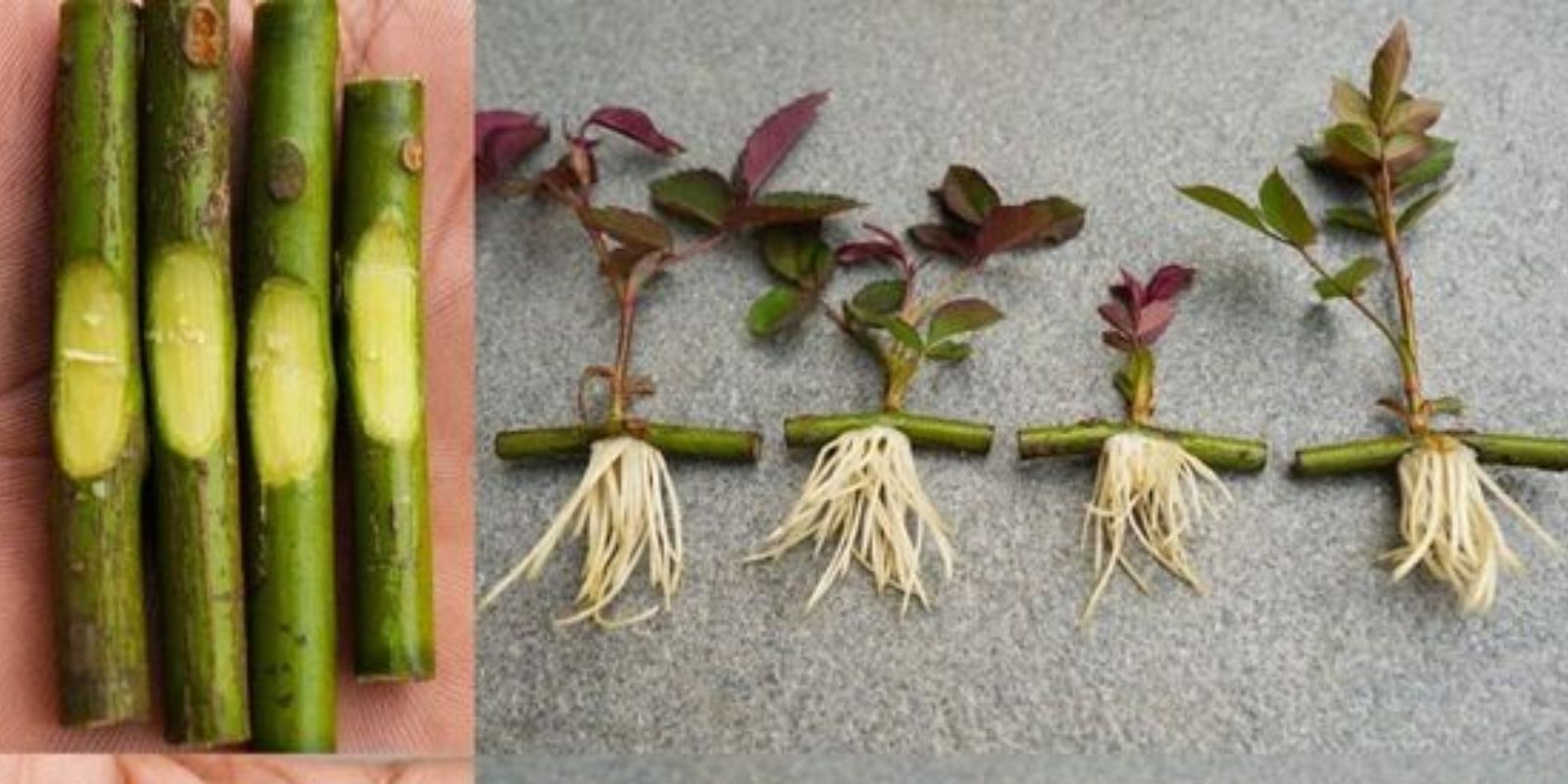Roses are beloved for their stunning blooms and delightful fragrance, making them a cherished addition to any garden. Whether you’re looking to expand your collection or share your favorite varieties with friends, propagating roses from cuttings is an effective and rewarding method. This comprehensive guide will walk you through the process, providing all the tips and tricks you need to successfully grow new rose plants.
Introduction
Propagating roses from cuttings is a simple yet effective way to grow new plants. This method involves taking a stem cutting from an existing rose bush and encouraging it to develop roots and grow into a new plant. With proper care and attention, you can enjoy the same beautiful flowers as the parent plant, adding more beauty and variety to your garden.
Why Propagate Roses?
There are several reasons why gardeners choose to propagate roses:
- Cost-Effective: Growing roses from cuttings is more economical than buying new plants.
- Preservation: It helps preserve and propagate heirloom or rare varieties.
- Sharing: It allows you to share your favorite roses with friends and family.
- Control: You can grow roses with specific traits you love, such as color or fragrance.
Selecting the Right Time and Tools
The best time to take rose cuttings is during the late spring or early summer when the plant is actively growing. The tools you’ll need include:
- Sharp Pruning Shears: To make clean cuts without damaging the plant.
- Rooting Hormone: To stimulate root growth.
- Small Pots and Well-Draining Soil: For planting the cuttings.
- Plastic Bags or Cloche: To maintain humidity around the cuttings.
Step-by-Step Guide to Propagating Roses
1. Select a Healthy Parent Plant
Choose a robust, disease-free rose plant with vibrant, healthy blooms. The success of your propagation depends largely on the health of the parent plant. Look for stems that are mature but not too woody.
2. Take Stem Cuttings
Using clean, sharp pruning shears, cut a 6-8 inch stem from the parent plant. Ensure that each cutting has at least 3-4 leaf nodes, which are crucial for rooting. It’s best to take cuttings in the morning when the plant is well-hydrated.
3. Prepare the Cuttings
Remove the lower leaves from the cuttings to prevent rot and reduce water loss. If there are any flowers or buds, remove them as well to direct the plant’s energy toward root development. Dip the cut ends in rooting hormone powder to encourage root growth.
4. Plant the Cuttings
Fill small pots with well-draining soil, such as a mix of perlite and peat moss. Create a hole in the soil and insert the cutting about 2-3 inches deep. Firm the soil around the cutting to ensure it stands upright and is stable.
5. Provide Ideal Conditions
Place the pots in a warm area with bright, indirect sunlight. Avoid direct sunlight, as it can be too intense for the young cuttings. Cover the cuttings with a plastic bag or cloche to create a humid environment, which helps prevent the cuttings from drying out.
6. Monitor Root Growth
Keep the soil consistently moist but not waterlogged. Check the cuttings regularly for signs of root and leaf growth. It usually takes several weeks for roots to develop. Be patient and avoid disturbing the cuttings during this period.
7. Transplanting the Cuttings
Once the cuttings have developed strong roots and new growth is evident, they are ready to be transplanted. Carefully transfer the young plants to larger pots or directly into your garden. Choose a location with well-draining soil and good sunlight, as roses thrive in sunny spots.
8. Care and Maintenance
Newly transplanted roses require consistent care. Water them regularly, especially during dry periods, but avoid overwatering. Fertilize the plants with a balanced fertilizer to promote healthy growth and abundant blooms. Keep an eye out for pests and diseases, and treat any issues promptly.
9. Monitor Growth and Prune
As your propagated roses grow, monitor their progress and prune them as needed to maintain a healthy shape. Remove any dead or diseased wood, and trim back excess growth to encourage a bushier plant. Proper pruning helps improve air circulation and light penetration, which can reduce the risk of disease.
10. Enjoy Your Roses
With time, patience, and care, your propagated roses will flourish, rewarding you with beautiful blooms. Enjoy the beauty and fragrance of your new roses, and take pride in the knowledge that you grew them from cuttings. Sharing your success with friends and family by giving them a cutting or two can also be a delightful way to spread the joy of gardening.
Conclusion
Propagating roses from cuttings is a fulfilling gardening project that allows you to expand your collection, preserve cherished varieties, and share the beauty of roses with others. By following these steps and providing the proper care, you can successfully grow new rose plants and enjoy their stunning blooms for years to come. Happy gardening!

